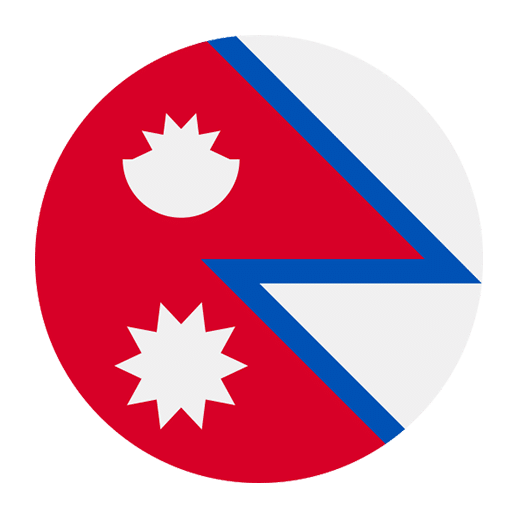In the digital age, social media has become an integral part of our daily lives, providing a platform for communication, information sharing, and cultural exchange. As more people engage with social media, the role of various languages, including Nepali, has become increasingly significant. The Nepali language, with its rich history and cultural heritage, plays a crucial role in shaping social media interactions among Nepali speakers and the broader global community. This article explores the influence and importance of the Nepali language in social media, its impact on cultural preservation, and its role in bridging communication gaps.
The Emergence of Nepali in Social Media
The rise of social media platforms such as Facebook, Twitter, Instagram, and YouTube has provided Nepali speakers with new avenues for communication and self-expression. With over 32 million speakers worldwide, Nepali has found a vibrant presence on these platforms, allowing users to share their thoughts, ideas, and experiences in their native language. Social media has democratized the way people communicate, making it easier for Nepali speakers to connect with each other and with the global audience.
One of the key drivers behind the increased use of Nepali on social media is the growing availability of localized content. Social media platforms have recognized the importance of catering to diverse linguistic communities and have introduced features that support Nepali, such as language options, translation tools, and keyboard layouts. This has made it more convenient for Nepali speakers to engage with social media and contribute to the digital discourse in their language.
Influence on Communication and Expression
The use of Nepali on social media has had a profound impact on how people communicate and express themselves. For many Nepali speakers, social media serves as a platform to voice their opinions, share their stories, and engage in meaningful conversations. It has empowered individuals to participate in public discourse and raise awareness about important social issues, such as gender equality, environmental conservation, and political reforms.
Moreover, social media has facilitated the creation of online communities where Nepali speakers can connect, share resources, and support each other. These communities often revolve around shared interests, such as literature, music, cooking, and travel, allowing members to exchange knowledge and experiences in their native language. This sense of belonging and mutual support has strengthened the social fabric and fostered a sense of identity among Nepali speakers.
Cultural Preservation and Promotion
Social media has played a pivotal role in preserving and promoting Nepali culture and traditions. By providing a platform for cultural expression, social media has enabled Nepali speakers to showcase their heritage to a global audience. From traditional music and dance performances to festivals and rituals, social media has become a digital archive of Nepali cultural practices.
Additionally, social media influencers and content creators have leveraged their platforms to celebrate and promote Nepali culture. Influencers often share content related to Nepali cuisine, fashion, and folklore, helping to keep these traditions alive and relevant. This has not only enriched the cultural landscape but also sparked interest and curiosity among younger generations, encouraging them to embrace and preserve their cultural heritage.
The Impact on Language Learning and Education
The integration of Nepali into social media has also had a positive impact on language learning and education. Social media platforms offer a wealth of resources for individuals seeking to learn Nepali or improve their language skills. From language learning apps and online courses to educational videos and interactive content, social media has made language education more accessible and engaging.
Language Learning Communities
One of the most significant contributions of social media to language learning is the formation of online language learning communities. These communities provide a supportive environment where learners can practice their language skills, seek advice, and share learning resources. For example, Facebook groups and language exchange forums allow learners to connect with native Nepali speakers, facilitating real-time language practice and cultural exchange.
Educational Content and Resources
Social media platforms such as YouTube and Instagram have become valuable repositories of educational content. Language educators and content creators produce videos, tutorials, and infographics that cover various aspects of the Nepali language, including grammar, vocabulary, pronunciation, and cultural nuances. These resources cater to learners of all levels, making it easier for them to grasp the language and gain confidence in their language abilities.
Interactive Learning Tools
The interactive nature of social media has also enhanced language learning experiences. Features such as quizzes, polls, and live streaming allow learners to engage with the content actively and test their knowledge in real-time. For instance, Instagram stories and Facebook live sessions enable language instructors to conduct live lessons, answer questions, and provide instant feedback, creating a dynamic and interactive learning environment.
Bridging Communication Gaps
The use of Nepali on social media has played a crucial role in bridging communication gaps, both within the Nepali-speaking community and between Nepali speakers and the global audience. By providing a platform for multilingual communication, social media has facilitated cross-cultural interactions and fostered mutual understanding.
Connecting Diaspora Communities
For Nepali speakers living abroad, social media serves as a vital link to their homeland and cultural roots. It allows diaspora communities to stay connected with family and friends, stay informed about current events in Nepal, and participate in cultural activities. Social media has also helped diaspora communities to organize and mobilize support for various causes, such as disaster relief efforts and social campaigns.
Promoting Multilingualism
Social media has promoted multilingualism by encouraging users to share content in multiple languages. Many Nepali speakers are bilingual or multilingual, often using a mix of Nepali, English, and other regional languages in their social media interactions. This linguistic diversity has enriched the digital discourse and facilitated communication between speakers of different languages. Translation tools and language options on social media platforms have further enhanced this multilingual experience, allowing users to access and understand content in various languages.
Fostering Global Connections
The global reach of social media has enabled Nepali speakers to connect with people from diverse cultural and linguistic backgrounds. This has opened up opportunities for cross-cultural exchange and collaboration, fostering a sense of global citizenship. By sharing their language and culture with the world, Nepali speakers have contributed to the global tapestry of human experiences and enriched the collective understanding of our shared humanity.
Challenges and Opportunities
While the integration of Nepali into social media has brought numerous benefits, it also presents certain challenges and opportunities.
Digital Literacy and Access
One of the primary challenges is the issue of digital literacy and access to technology. Although social media has become increasingly accessible, there are still segments of the population, particularly in rural areas, that lack access to the internet and digital devices. Bridging this digital divide is essential to ensure that all Nepali speakers can benefit from the opportunities offered by social media.
Language Standardization
Another challenge is the standardization of the Nepali language on social media. The informal nature of social media communication often leads to the use of colloquial language, slang, and code-switching. While this reflects the dynamic and evolving nature of language, it can also create inconsistencies and misunderstandings. Efforts to promote language standardization and proper usage, while respecting linguistic diversity, can help address this issue.
Content Moderation and Safety
Content moderation and safety are also critical concerns on social media platforms. The prevalence of misinformation, hate speech, and cyberbullying poses risks to users and can undermine the positive impact of social media. Implementing effective content moderation policies and promoting digital literacy can help create a safer and more inclusive online environment for Nepali speakers.
Opportunities for Innovation
Despite these challenges, there are numerous opportunities for innovation in the use of Nepali on social media. Technological advancements, such as artificial intelligence and machine learning, can enhance language translation and content curation, making it easier for users to access relevant and high-quality content. Additionally, collaborations between social media platforms, language educators, and cultural organizations can lead to the development of innovative tools and resources that support language learning and cultural preservation.
Conclusion
The role of the Nepali language in social media is multifaceted and dynamic, reflecting the broader trends of digital communication and cultural exchange. Social media has empowered Nepali speakers to communicate, express themselves, and connect with others in ways that were previously unimaginable. It has also played a crucial role in preserving and promoting Nepali culture, enhancing language learning, and bridging communication gaps.
As social media continues to evolve, the opportunities for leveraging the Nepali language will only grow. By embracing these opportunities and addressing the challenges, we can ensure that the Nepali language remains a vibrant and integral part of the digital landscape, enriching the lives of its speakers and contributing to the global conversation.

